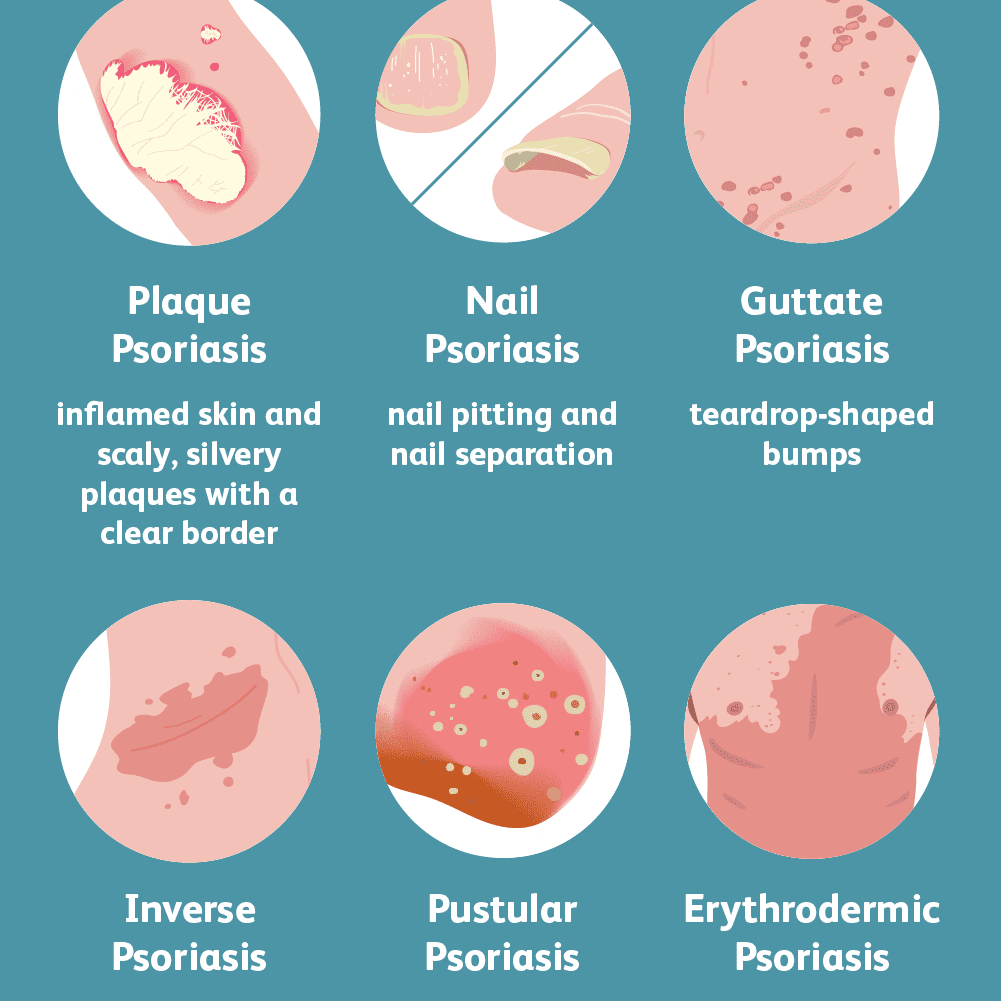- Published on
Psoriasis-- Signs, Stats, and Facts
- Authors
- Name
- Kevin Zhang
- Role
- Content Writer
Although there are many types of psoriasis, some symptoms they invariably cause are:
Itchiness
Irritation
Soreness
Burning sensation of affected area
Small scaling spots (common in children)
Dry, cracked skin (may bleed)
Rashes
In addition to the common symptoms mentioned above, there are 5 major types of psoriasis classified depending on the region of the body they affect. In each case, there are also some unique symptoms that come with it. The common types are:
Plaque psoriasis, affecting about 80% of people who have psoriasis. It can occur anywhere on the body, but most commonly on the elbows, knees, lower back, and scalps.
Nail psoriasis, which can affect both fingernails or toenails, causing pitting, abnormal growth, discoloration, and could loosen the nail from the nailbed.
Guttate psoriasis, affecting about 8% of people who have psoriasis. It is most common among young adults and children, and can affect the arms, legs, and trunk.
Pustular psoriasis, a rare type that affects about 3% of people who have psoriasis. It causes pus-filled blisters to form along the hands or soles of the feet, or the entire body.
Inverse psoriasis, affecting about a quarter of those who suffer from psoriasis. It occurs mainly around the areas of skin-folds like the groin area, buttocks, under-breasts, and underarms. For those who suffer from inverse psoriasis, they will not develop scaly skin like other types, but they will develop red, smooth, and itchy skin in those areas, especially worsened by sweat and friction.
Erythrodermic psoriasis, which is the rarest type of psoriasis at about 2%. This type usually affects the entire length of the body, causing deep-red flares and intense shedding of large sheets of skin. This type is potentially life-threatening. Flares may occur and cause other symptoms like dehydration, changes in heart rate and temperature, and severe itching and pain. Erythrodermic flares may be short-lived (acute) or long-term (chronic).
Currently, there is no cure for psoriasis, only treatments and coping methods that can alleviate symptoms of this disease. Treatment options include creams and ointments (topical therapy), light therapy (phototherapy), and oral or injected medications. One may often need to try out different treatment methods in order to find out the one that is most effective, which may differ from person-to-person.
Although the symptoms of this skin disease are rather brutal, psoriasis tends to behave in a cyclic manner, flaring for a few weeks or months then subsiding for a while.
